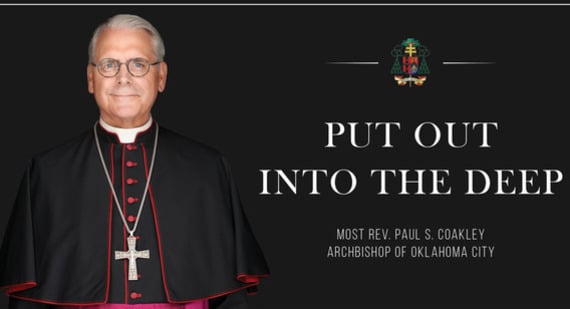-
 July 9, 2025Deep beneath the streets of Rome, a hidden network of pathways connects past and present, offering us a glimpse into the early Christian experience. The catacombs, those underground burial sites often used by the first believers as well as others, were more than just resting places for the dead, they became sanctuaries for the living.
July 9, 2025Deep beneath the streets of Rome, a hidden network of pathways connects past and present, offering us a glimpse into the early Christian experience. The catacombs, those underground burial sites often used by the first believers as well as others, were more than just resting places for the dead, they became sanctuaries for the living.
Amid persecution, Christians sometimes gathered in those dim corridors to worship in secret, often celebrating the Eucharist near or even over the tombs of the martyrs. In doing so, they visibly expressed the link between the Church on earth and the eternal glory of heaven.
That same link endures today. The veneration of relics is not a morbid curiosity – it is an expression of hope. As Revelation tells us, “I saw underneath the altar the souls of those who had been slaughtered because of the witness they bore to the word of God” (Revelation 6:9). The saints who bore witness with their lives are still joined to us in the liturgy, which anticipates the eternal worship of heaven.
You may have grown up aware of this tradition continued in your parish church. Many older altars include a small relic of a saint embedded in a stone set beneath the altar’s surface. Even in contemporary altars, the tradition endures, though often less visible.
These relics link the altar with the firm witness of the saints and remind us that every celebration of the Mass is a communion not just with Jesus Christ, but with his faithful witnesses throughout time.
In some places, that connection is even more vivid. At the Blessed Stanley Rother Shrine in Oklahoma City, one altar contains not merely a small relic, but the entire body of a saint and martyr. Just as many altars in Saint Peter’s Basilica rest above the tombs of saints, so too does this altar house the remains of a faithful priest from Okarche: Blessed Stanley Rother.
As we approach the 44th anniversary of his martyrdom this July and reflect on more than two years of the shrine’s existence, we give thanks for the enduring impact of Blessed Stanley’s life.
The shrine itself is a living testament to this impact. Every week more than 10,000 pilgrims and worshippers step onto the grounds where they are welcomed by the shrine’s dedicated staff, clergy and volunteers. Whether they come with a clear intention or simply curiosity, each person encounters something greater: the faith that animated Blessed Stanley’s life, a faith centered on the Eucharist, on Mary’s trusting “yes,” and on the mission of love rooted in Christ.
God is doing remarkable things in Oklahoma through the witness of this local priest. His story has drawn pilgrims from across the country and around the globe, bringing with them stories of conversion, healing and renewed faith.
The shrine has become a place of convergence, hosting large celebrations, cultural festivals and conferences that unite people of all ages, languages and backgrounds in praise of God.
But, the shrine’s beauty does not exist for its own sake. It points beyond itself, drawing hearts upward, like the pilgrims who ascend Tepeyac Hill on the shrine grounds. They come not to admire beautiful statues made of bronze, but to draw closer to the Blessed Mother and Saint Juan Diego, asking for their intercession and seeking deeper intimacy with her Son.
So too, the life of Blessed Stanley Rother draws us beyond mere admiration to imitation. His story – from the fields of Okarche, through academic struggles and perseverance in seminary, to missionary service in Guatemala, and ultimately to his martyrdom – reveals a life beautifully conformed to Christ. It’s the kind of beauty that reveals truth: the truth of discipleship, of love poured out, of holiness in ordinary faithfulness.
As we prepare to celebrate his feast day on July 28, the Church in Oklahoma and beyond is invited to ask: How can I imitate Blessed Stanley’s humility, perseverance and generosity? Whether we are priests or parents, religious or lay, young or old, the call is the same: to live out our baptismal vocation with courage and joy.
May his witness continue to stir in us the desire to live the Gospel more radically, more faithfully, more beautifully. As Tertullian reminded us long ago, “The blood of martyrs is the seed of the Church.”
May this local seed, planted in the red soil of Oklahoma, continue to bear fruit in lives transformed by grace.
And may Blessed Stanley Rother soon be recognized by the universal Church as a saint, so that his example may inspire many more to walk the path of holiness.
